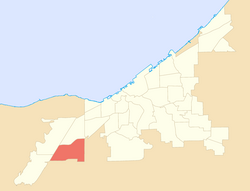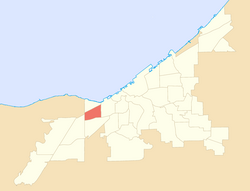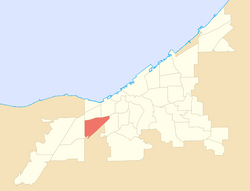
Neighborhoods in Cleveland refer to the 34 neighborhood communities of the city of Cleveland, Ohio, as defined by the Cleveland City Planning Commission. [1] [2] Based on historical definitions and census data, the neighborhoods serve as the basis for various urban planning initiatives on both the municipal and metropolitan levels. [2] Technically known as Statistical Planning Areas (SPAs), they also provide a "framework for summarizing socio-economic and other statistics within the city." [2] City neighborhood boundaries were last revised by the City Planning Commission in 2012. [2]
Contents
Cleveland's neighborhoods are generally defined by their position on either the East Side or West Side of the Cuyahoga River. [3] Downtown and Cuyahoga Valley are situated between the East and West Sides, while the Broadway–Slavic Village neighborhood is sometimes referred to as the South Side. [4]

































